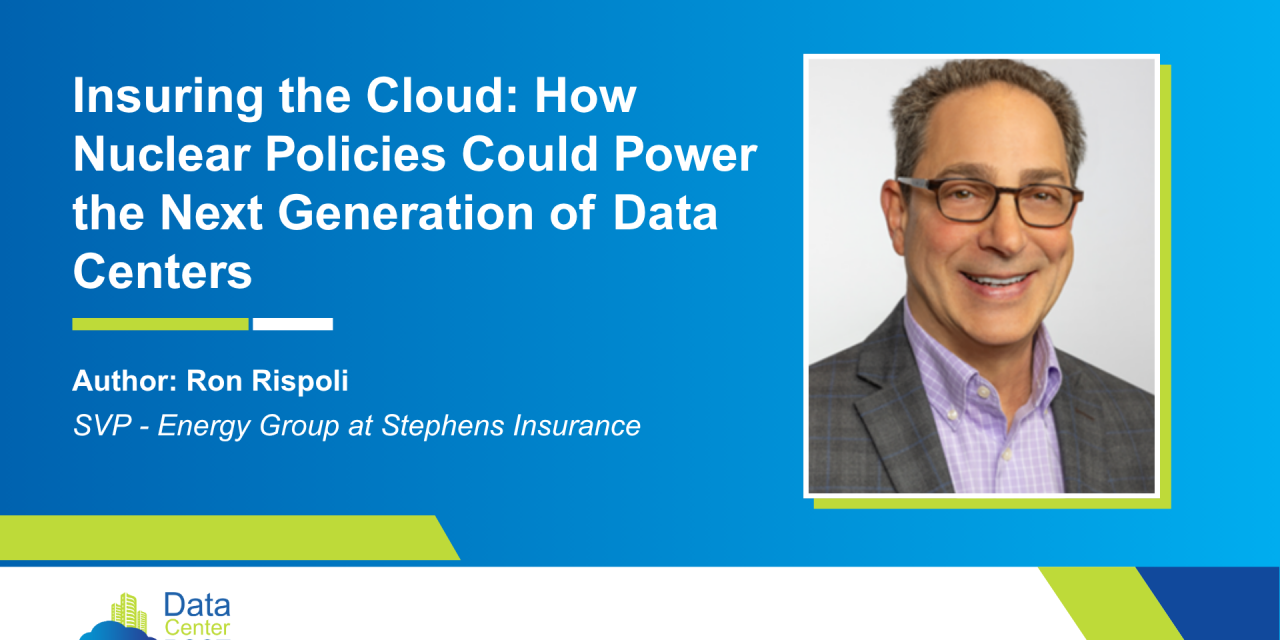The rapid growth of data centers is resulting in one of the most energy intensive sectors of the industrial economy. Providing power to support artificial intelligence, cloud computing, and cryptocurrency mining requires an uninterrupted supply of electricity. To ensure reliability, some data center developers are considering the deployment of small modular reactors (SMRs). These reactors would provide a steady, carbon-free energy source. However, as nuclear energy enters the data center space the question of insurance and how to protect operators and the public becomes critical to ensure progress toward commercial viability.
Understanding Nuclear Insurance Basics
The foundation of nuclear liability insurance in the United States lies in the Price Anderson Nuclear Industries Indemnity Act (1957), which created a unique liability system for nuclear operators. The Act mandates that reactor owners maintain the maximum amount of insurance coverage available in the market to cover potential nuclear liability damages. Currently, each reactor above 100MW is required to carry $500 million in primary coverage, supported by an additional string of retrospective payments from other licensed operators if needed. Reactors that generate more that 10 MW, but do not generate electrical power, and reactors that generate less than 100 MW are required to carry liability insurance between $4.5 and $74 million. The precise amount is governed by a formula based on thermal power and on the local population density.
Nuclear liability insurance is fundamentally distinct from conventional insurance because it addresses specialized, high-consequence, low-probability risks that other markets cannot efficiently underwrite. Commercial insurance disperses risks among individual insurers while nuclear insurance utilizes insurance pools. Pools, such as the U.S. American Nuclear Insurers (ANI) and Nuclear Risk Insurers (NRI) in the UK, combine the capacity of multiple insurers to jointly cover nuclear risks.
These pooling arrangements are necessary because the nuclear risk profile does not adhere to normal actuarial assumptions. Insurers lack adequate historical loss data on nuclear accidents, and maximum loss scenarios are so extreme that no single company could absorb them. The pooling structure allows for a broader distribution of potentially catastrophic losses across multiple insurers.
Underwriting and Risk Assessment
For nuclear property insurance, the focus of underwriters is on plant design, regulatory compliance, and operational culture rather than the statistical loss experience, which dominates conventional property insurance underwriting. Specialized insurance mutuals such as Nuclear Electric Insurance Limited (NEIL) and European Mutual Association for Nuclear Insurance (EMANI) provide coverage for damages to physical plant property. This coverage includes nuclear specific risks which are typically excluded in commercial markets such as on-site decontamination, radiation cleanup, and extended outage losses.
Conventional property insurance underwriters evaluate frequent, well-understood risks based on probabilistic models using large datasets. For nuclear installations, the low number of severe historical accidents, combined with potentially enormous losses like those sustained at Fukushima and Chernobyl precludes the traditional risk-based rating and instead relies on specialized engineering assessments.
Early engagement with markets is essential
SMR projects are no different than traditional capital projects with respect to builder’s risk insurance coverage during construction, however, when fuel arrives on site, the requirements for coverage and the availability of insurance capacity drastically changes. It is important for project managers to engage with underwriters early in the conceptual design phase to ensure adequate coverage is available. Since SMRs will likely be viewed by underwriters as first-of-a-kind technology with different safety and operational profiles compared to traditional nuclear reactors, they will want to understand the design, construction, and operational nuances to evaluate whether they would insure the risk. This early collaboration allows insurers to identify specific risk exposures at each stage of development, from off-site manufacturing to on-site assembly and nuclear fuel commissioning avoiding any gaps in coverage, particularly during the transition from construction to full operation. Failure to involve insurers early may lead to coverage fragmentation or exclusions, impacting financing and project timelines.
Nuclear property and liability insurance diverges from conventional insurance primarily through collective risk-sharing and the absence of market-based underwriting models. Its unique nature reflects the complexity of managing nuclear risks. As companies explore the deployment of SMR’s to power data centers, understanding these distinctions is crucial to designing viable insurance programs and avoiding any bottlenecks that could delay operation.
# # #
About the Author:
Ron Rispoli is a Senior Vice President in the Energy Group at Stephens Insurance. His primary focus is assisting clients in navigating the complex landscape of nuclear property and liability coverage for both existing and future nuclear facilities. He also provides risk management consultation services to utility clients, with an emphasis on emerging risks in nuclear construction. He works to help clients understand the critical role insurance plays in managing risks associated with nuclear operations and activities. He has over forty years of experience in the commercial nuclear arena.


